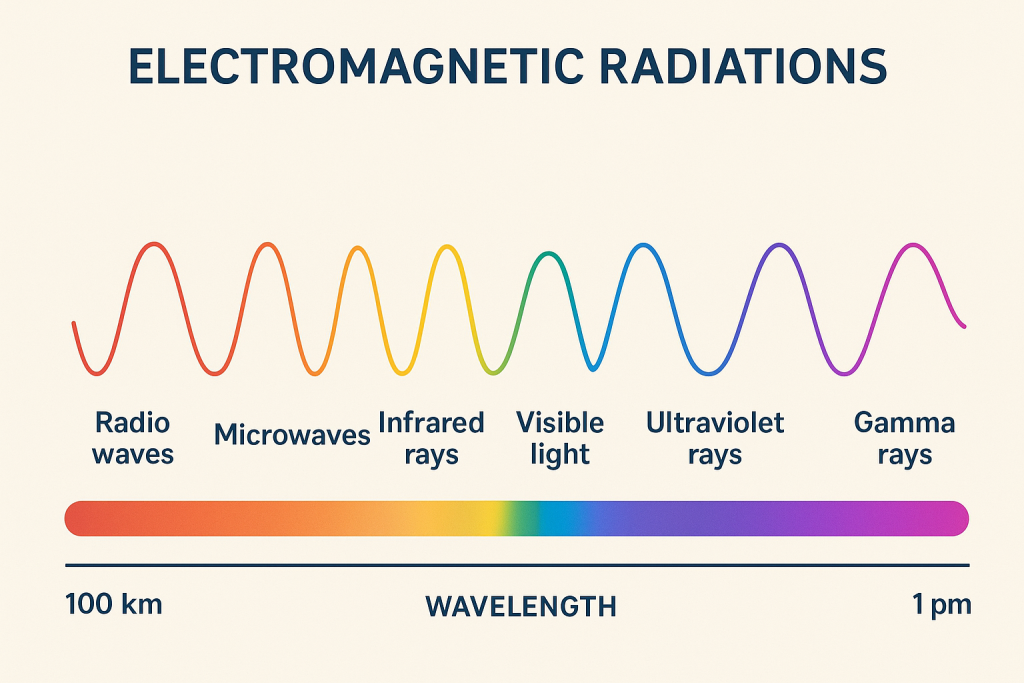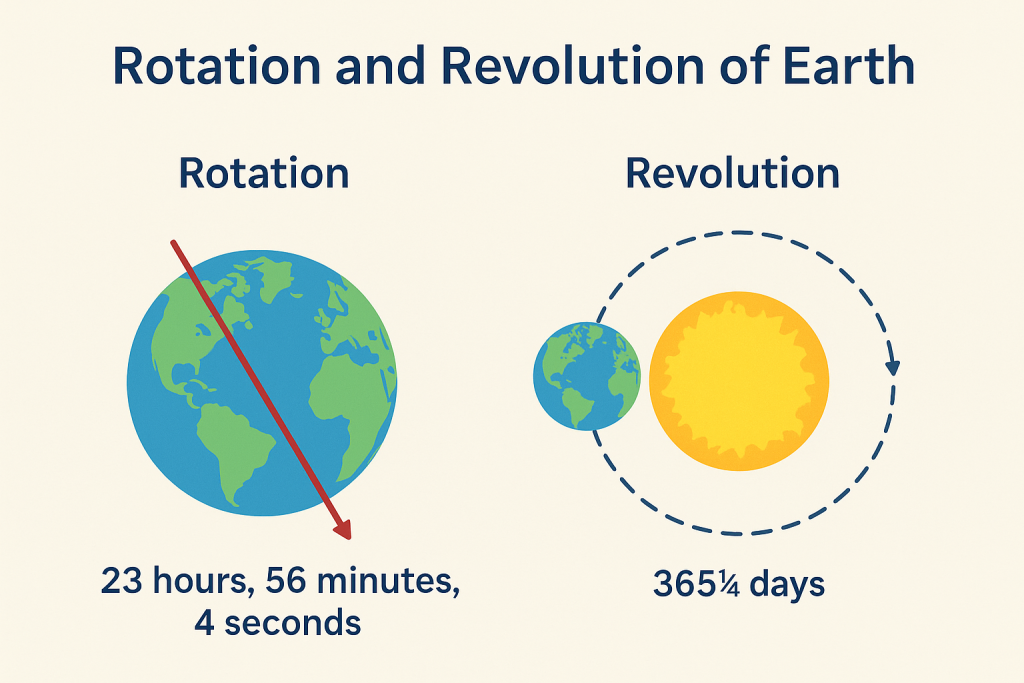Describe Electromagnetic Radiations. Give its types and explain their applications.

Introduction
Electromagnetic radiations are waves of energy that propagate through space without the need for a material medium. They consist of oscillating electric and magnetic fields that travel at the speed of light (3 × 10⁸ m/s) in a vacuum. These radiations form the electromagnetic spectrum, which ranges from very long radio waves to very short gamma rays.
Electromagnetic waves are fundamental to modern science and technology, having widespread applications in communication, medicine, industry, and research.
Nature and Properties of Electromagnetic Radiations
- They travel in the form of transverse waves.
- They can travel through a vacuum (unlike sound waves).
- They move at the speed of light (3 × 10⁸ m/s).
- They exhibit properties such as reflection, refraction, interference, diffraction, and polarization.
- They carry energy and momentum, capable of exerting radiation pressure.
Types of Electromagnetic Radiations
The electromagnetic spectrum is divided into several regions based on wavelength and frequency. The main types are:
1. Radio Waves
- Wavelength: More than 1 meter
- Frequency Range: Up to 3 × 10⁹ Hz
- Source: Oscillating electric circuits and antennas
- Applications:
- Used in radio and television broadcasting.
- Wireless communication (Wi-Fi, Bluetooth, mobile networks).
- Radar systems and navigation.
2. Microwaves
- Wavelength: 1 meter to 1 millimeter
- Source: Klystron and magnetron tubes
- Applications:
- Cooking (microwave ovens).
- Satellite communication and radar technology.
- Weather forecasting (Doppler radar).
3. Infrared Rays
- Wavelength: 1 millimeter to 700 nanometers
- Source: Hot bodies, including the Sun and human skin
- Applications:
- Remote controls and thermal imaging cameras.
- Night vision devices and medical therapies.
- Infrared astronomy to study celestial bodies.
4. Visible Light
- Wavelength: 700 nm to 400 nm
- Source: Sun, lamps, lasers
- Applications:
- Vision — enables human eyes to see.
- Photography, optical instruments, and communication via fiber optics.
- Lighting and display technologies.
5. Ultraviolet (UV) Rays
- Wavelength: 400 nm to 10 nm
- Source: Sun, mercury lamps
- Applications:
- Sterilization and disinfection (kills bacteria and viruses).
- Medical and cosmetic use (vitamin D synthesis, tanning).
- Forensic analysis and fluorescent lighting.
6. X-Rays
- Wavelength: 10 nm to 0.01 nm
- Source: X-ray tubes and high-energy electron impacts
- Applications:
- Medical imaging (X-ray radiography).
- Security scanning at airports.
- Industrial inspection of materials and welds.
7. Gamma Rays
- Wavelength: Less than 0.01 nm
- Source: Radioactive decay and nuclear reactions
- Applications:
- Cancer treatment (radiotherapy).
- Sterilization of medical equipment.
- Astrophysics — study of cosmic radiation.
Conclusion
Electromagnetic radiations are indispensable to modern civilization. From enabling communication and medical diagnostics to powering industrial technologies and scientific research, their applications are vast. Understanding their nature and uses helps in harnessing their benefits safely while minimizing harmful effects such as radiation exposure.
Short Summary (for CSS Notes):
- Definition: EM waves are oscillations of electric and magnetic fields traveling at the speed of light.
- Types: Radio, Microwave, Infrared, Visible, UV, X-rays, Gamma rays.
- Applications: Communication, medicine, sterilization, imaging, and industrial uses.
Describe Electromagnetic Radiations. Give its types and explain their applications. Read More »

